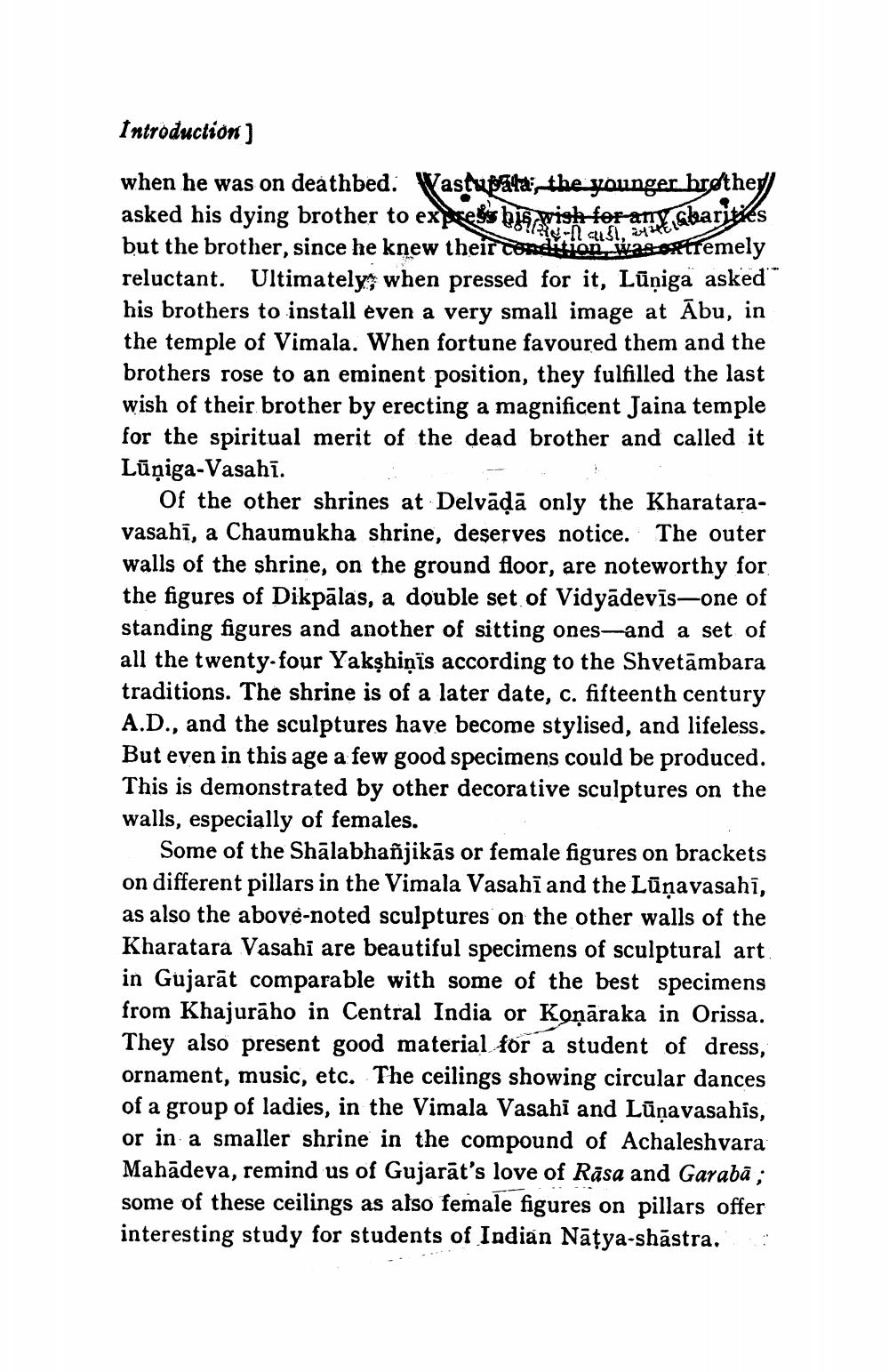________________
Introduction )
when he was on deathbed. Vastupala, the younger brothe/ asked his dying brother to express bis wish for any abarities but the brother, since he knew their conto di soxtremely reluctant. Ultimately, when pressed for it, Lūņiga asked his brothers to install even a very small image at Ābu, in the temple of Vimala. When fortune favoured them and the brothers rose to an eminent position, they fulfilled the last wish of their brother by erecting a magnificent Jaina temple for the spiritual merit of the dead brother and called it Lūņiga-Vasahī.
Of the other shrines at Delvādā only the Kharataravasahī, a Chaumukha shrine, deserves notice. The outer walls of the shrine, on the ground floor, are noteworthy for the figures of Dikpālas, a double set of Vidyādevīs-one of standing figures and another of sitting ones and a set of all the twenty-four Yakşhiņis according to the Shvetāmbara traditions. The shrine is of a later date, c. fifteenth century A.D., and the sculptures have become stylised, and lifeless. But even in this age a few good specimens could be produced. This is demonstrated by other decorative sculptures on the walls, especially of females.
Some of the Shālabhanjikās or female figures on brackets on different pillars in the Vimala Vasahi and the Lūņavasahi, as also the above-noted sculptures on the other walls of the Kharatara Vasahi are beautiful specimens of sculptural art in Gujarat comparable with some of the best specimens from Khajurāho in Central India or Konāraka in Orissa. They also present good material for a student of dress, ornament, music, etc. The ceilings showing circular dances of a group of ladies, in the Vimala Vasahi and Lūņavasahis, or in a smaller shrine in the compound of Achaleshvara Mahādeva, remind us of Gujarāt's love of Räsa and Garabā ; some of these ceilings as also female figures on pillars offer interesting study for students of Indian Nāțya-shāstra.




